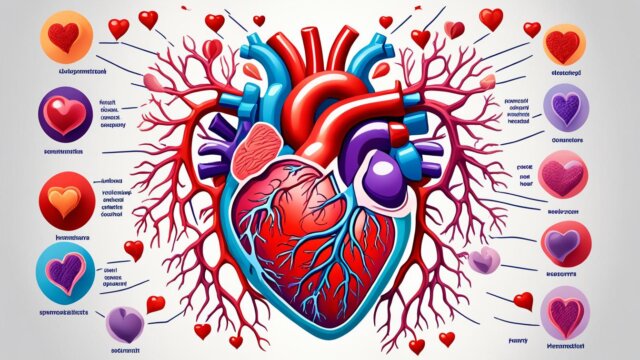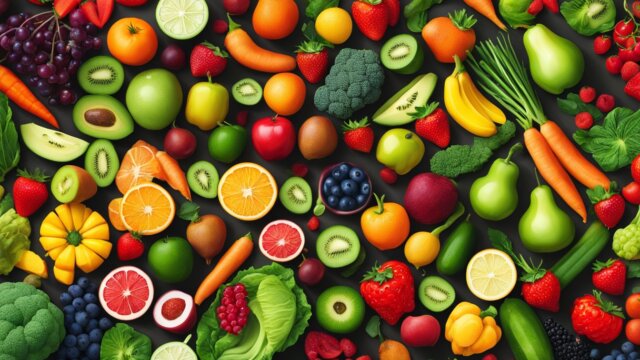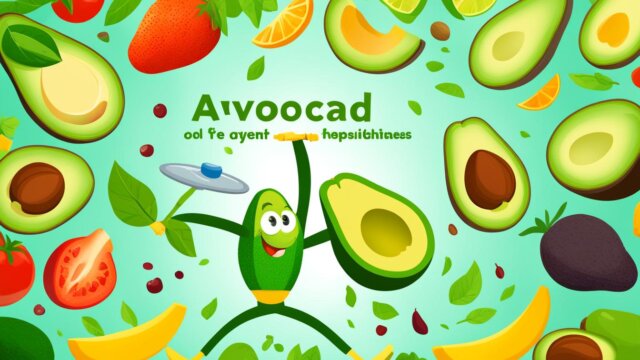FTC disclaimer: This post may contains affiliate links and we will be compensated if you click on a link and make a purchase.
Many Americans don’t eat enough fiber in their diets. Fiber is key for a healthy digestive system. It’s important to know the difference between soluble and insoluble fiber. This knowledge can improve your gut health and well-being. Let’s explore the benefits of both types of fiber.
Key Takeaways
- Soluble fiber-rich foods include oats, beans, certain fruits, and root vegetables.
- Insoluble fiber sources are found in whole grains, vegetables, and seeds.
- Soluble fiber aids in controlling blood sugar levels and provides a feeling of fullness.
- Insoluble fiber helps prevent constipation and maintains a healthy digestive rhythm.
- Both soluble and insoluble fiber work together to support overall gut health.
Unraveling the World of Fiber
Fiber is key for keeping our digestive system healthy. It helps us have regular bowel movements, staves off constipation, and improves gut health. Learning about the two main types of fiber, soluble and insoluble, is important.
Fiber’s Role in Digestive Health
A diet filled with fiber is great for your gut. It makes sure you go regularly, lowers the chance of some gut problems, and helps your whole digestive system work well. Knowing about soluble and insoluble fiber helps you plan your meals better.
Types of Fiber: Soluble and Insoluble
Soluble fiber mixes with water to form a gel. This gel slows how fast our bodies absorb carbs. It keeps blood sugar steady and makes us feel full. On the other hand, insoluble fiber doesn’t dissolve. It makes our poo bulkier, making it easier to go and preventing constipation.
Eating lots of different fiber-filled foods gives us both types. Think whole grains, fruits, veggies, and beans. This mix boosts gut health and overall wellness in a big way.
“Fiber is the foundation of a healthy gut. By understanding the differences between soluble and insoluble fiber, you can tailor your diet to support optimal digestive function.”
Want to keep things moving, control cholesterol, or stay at a good weight? Fiber is your friend.
Soluble Fiber: The Gel-Forming Ally
Soluble fiber is special. It dissolves in water to make a gel-like substance in the digestive tract. This gel slows digestion. It helps you feel full longer and keeps your blood sugar steady.
You can find soluble fiber in plants like oats, beans, some fruits (like apples and berries), and root veggies (such as carrots and sweet potatoes). Adding these foods to your diet is good for your gut.
What is Soluble Fiber?
Soluble fiber is a kind of fiber that mixes with water to form a thick gel in your gut. This gel slows down how your body takes in food’s nutrients. It keeps you feeling full and helps your blood sugar stay even. Eating foods with soluble fiber can also lower your cholesterol and keep your gut healthy.
Sources of Soluble Fiber
Many foods are rich in soluble fiber and easy to add to your meals. Here are some top sources:
- Oats
- Beans
- Lentils
- Chia seeds
- Apples
- Blueberries
- Carrots
- Sweet potatoes
Adding these foods to your meals and snacks helps you get enough daily fiber. It also keeps your digestive system healthy.
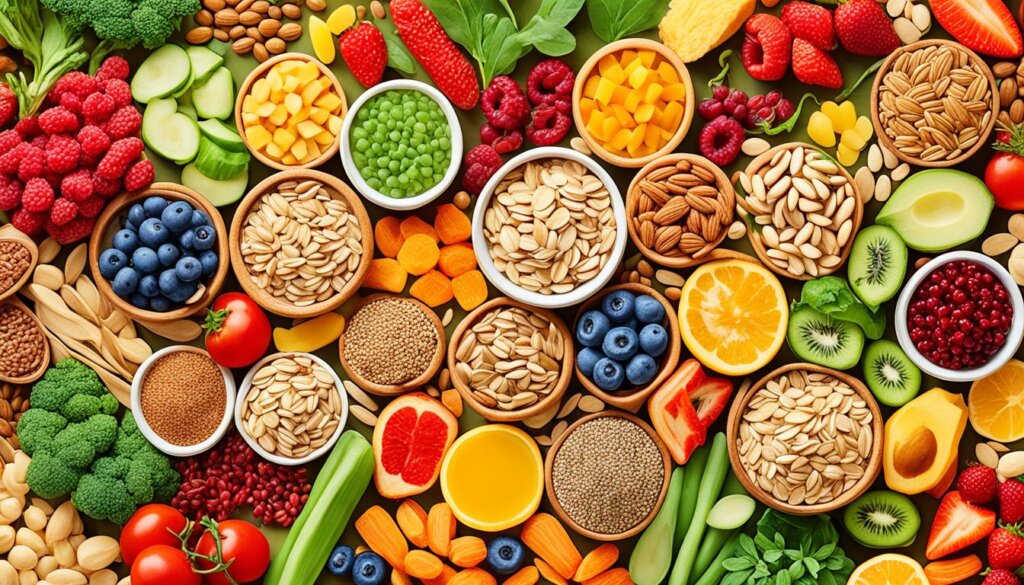
“Soluble fiber can help lower glucose levels and blood cholesterol. Foods with soluble fiber include oatmeal, chia seeds, nuts, beans, lentils, apples, and blueberries.”
Don’t forget, that a diet balanced with both soluble and insoluble fiber is crucial for good digestion and health.
Insoluble Fiber: The Roughage Regulator
Insoluble fiber doesn’t dissolve in water. It stays whole as it travels through our bodies. This helps keep our digestive system healthy by bulking up the stool. It also makes sure we go to the bathroom regularly. Insoluble fiber clears out waste and toxins, stopping constipation. This helps our digestion run smoothly.
Whole grains, veggies, and seeds give us lots of insoluble fiber. You can eat these foods raw or cooked. They are full of good nutrients and keep your gut in top form.
Eating insoluble fiber brings lots of good things. More fiber means you’re less likely to gain weight or fat. It also lowers your chances of getting breast cancer, heart disease, and colon cancer. Fiber even lowers harmful inflammation markers, like C-reactive protein.
Insoluble Fiber Sources | Fiber Content per Serving |
|---|---|
Whole Grains (e.g., wheat bran, brown rice) | 2.4g per ounce |
6.4g per serving | |
Legumes (e.g., beans, lentils, peas) | 8.0g per serving |
Nuts and Seeds | Variable, but generally high in fiber |
Eating different high-insoluble-fiber foods helps our digestion a lot. It keeps us regular and could offer more health bonuses.
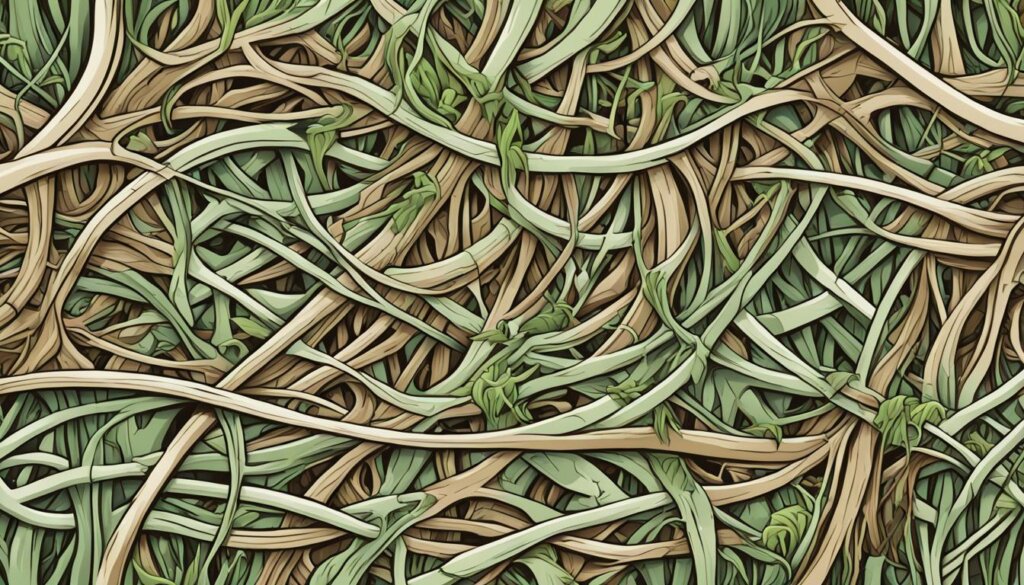
Using insoluble fiber can really change how we feel. So, dive into the variety of whole grains, veggies, and seeds for a well-working digestion.
The Dynamic Duo: Complementary Benefits
Soluble and insoluble fiber are like partners in crime for your tummy. Soluble fiber’s jelly-like form slows down your body’s digestion. It helps control sugar levels while making you feel full. On the flip side, insoluble fiber raises the stool’s volume. This eases going to the bathroom and stops constipation. Together, they team up to ace your gut health game.
Soluble Fiber’s Perks
Find soluble fiber in things like oats, peas, beans, and fruits. It helps keep sugar levels in check and lowers bad cholesterol. Acting like a prebiotic, it boosts your gut’s health and immune system. Also, it helps digest sugars slow, making you feel full and fights extra weight.
Insoluble Fiber’s Advantages
This tough fiber is from wheat bran, veggies, and grains. It brings extra heft to your stool, aiding with the on-time bathroom use. Great news for those clogged up, it speeds up waste movement inside. Insoluble fiber is a cheerleader for your gut’s overall well-being.
Eating both kinds of fiber acts like a tag team for your gut and health. They’re a dream team for keeping things regular, managing cholesterol, and blood sugar.
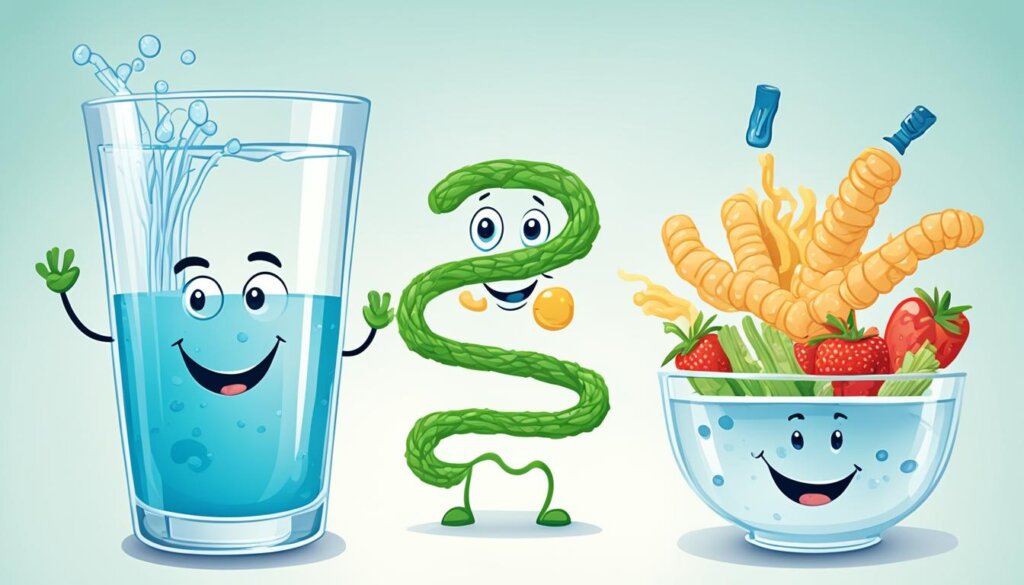
“Fiber is essential for maintaining a healthy digestive system and promoting overall wellbeing. By incorporating both soluble and insoluble fiber into your diet, you can achieve a powerful synergy that supports your gut health and beyond.”
Striking the Perfect Balance
Achieving the right mix of soluble and insoluble fiber is key to good digestive health. It’s important for our overall well-being. Different people might need different amounts, based on their health. Most Americans should aim for 25 to 30 grams of fiber each day for best results. But, many eat less than this.
Eating a mix of foods high in fiber can help you find your ideal digestive balance. Soluble fiber, in oats, barley, and fruits, is great for those with diabetes. It slows down sugar and helps insulin work better. Insoluble fiber makes your stools softer, making it easier to go to the bathroom and prevents constipation.
Remember, too much fiber can cause problems like bloating or constipation. But, fiber-rich foods are good for you in many ways. They give you both fiber and important nutrients.
To find the best balance, add fiber to your diet slowly. Drink plenty of water and mix up your fiber sources. Pay attention to how your body reacts. A dietitian can help figure out what’s best for you, even suggesting supplements for a healthy gut.
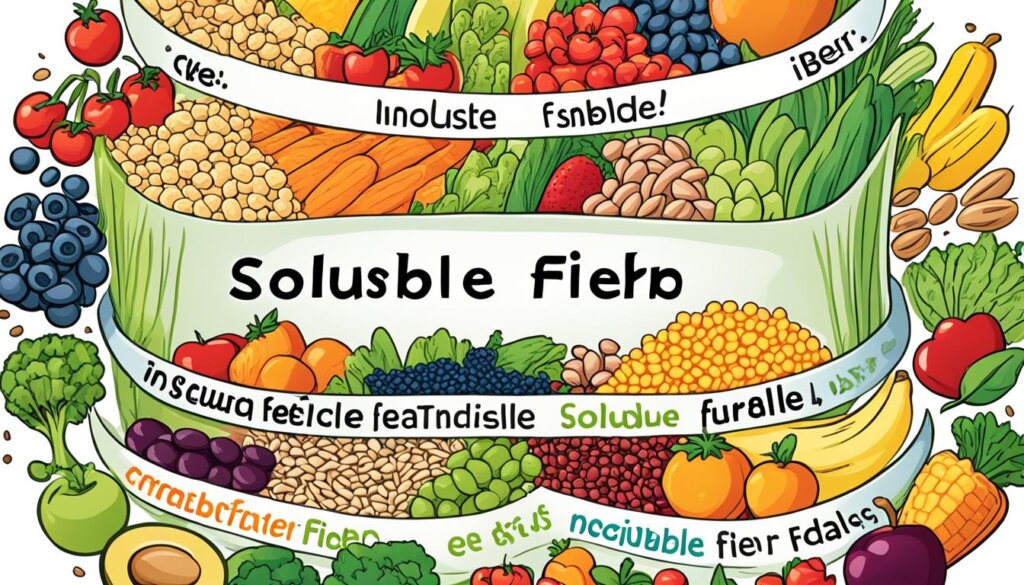
“By focusing on a balanced fiber intake, you can optimize your digestive function and overall well-being.”
Having the right mix of both kinds of fiber can do a lot for your health. It can lower bad cholesterol, keep your blood sugar steady, and reduce your chance of colon cancer. With the right steps, you can enjoy the many good things fiber does for your body.
Soluble and Insoluble Fiber: A Digestive Duo
Soluble and insoluble fiber are a powerful pair for our digestion. Soluble fiber forms a gel in our stomach. This slows down how fast we digest food and keeps our blood sugar steady. In contrast, insoluble fiber makes our stools bulkier. It helps us have regular and easy bowel movements, avoiding constipation. Using both fibers in our meals enhances gut health and our overall wellness.
Regretfully, most Americans miss out on enough fiber in their daily meals. The National Library of Medicine says 95% of them don’t reach the mark. Experts suggest women should aim for 25 grams a day, and men for 38 grams. To give you an idea of what this looks like, half an avocado offers a similar fiber amount as a whole potato with its skin, a pear, or half a cup of garbanzo beans.
Soluble fiber acts like a gel, slowing down nutrient absorption. This is key for people with type 2 diabetes. In contrast, insoluble fiber keeps things moving in your intestines, preventing constipation. Including both types in your meals keeps your digestive system healthy. This can lead to many benefits for your body.
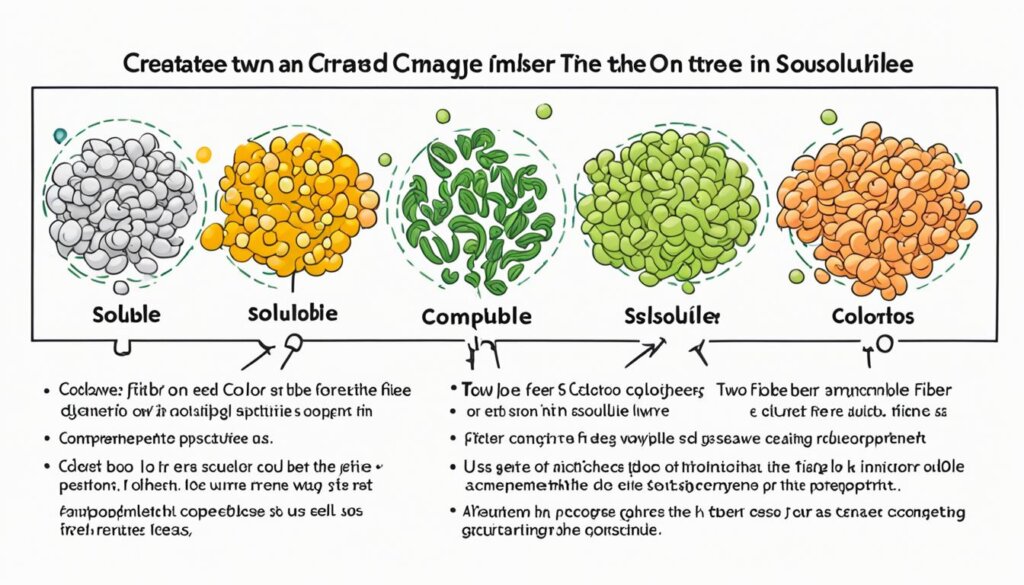
Fiber is mostly in plants like beans, artichokes, avocados, and berries. A diet high in fiber can help lower bad cholesterol. It does this by binding with cholesterol in your gut, which is great for your heart. Plus, fiber can help you manage your weight by keeping you from snacking too much and controlling your carb intake.
By knowing how important both soluble and insoluble fiber are, and by making sure to eat enough of them, you’ll be healthier. They work together to make your digestive system run smoothly. This supports your health in many ways.
Fiber-Rich Foods to Embrace
It’s vital to eat lots of high-fiber foods for a good gut. They’re not just full of good stuff for you. They help your whole body feel better.
Top Soluble Fiber Sources
Soluble fiber turns into a gel in your stomach. You can get it from yummy foods. Good sources are oats, beans, apples, berries, carrots, and sweet potatoes. A cup of mashed sweet potatoes has 8.2 grams of fiber. And a medium artichoke has 6.84 grams.
Stellar Insoluble Fiber Options
Insoluble fiber helps keep you regular and your gut healthy. It’s in whole grains, veggies, and seeds. Brown rice, quinoa, and barley are great for this. Chia and flaxseeds, as well as nuts, are awesome fiber sources.
Eating different plant foods gives you all the fiber you need. Fiber does a lot for you. It helps your heart, fights some cancers, keeps you regular, and steadies blood sugar.
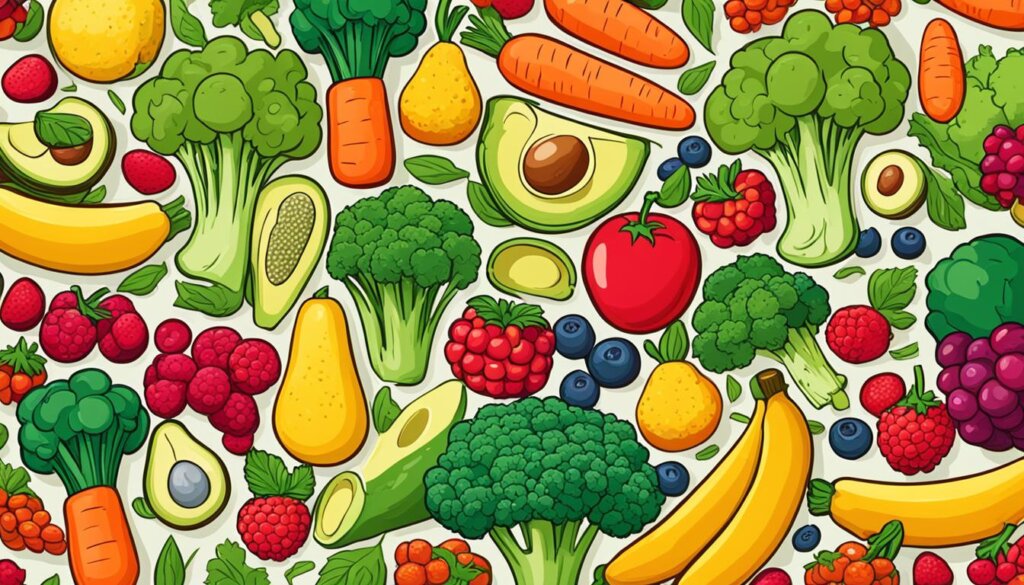
It’s best to eat both soluble and insoluble fiber. Doing so supports your gut and keeps you well.
Boosting Fiber Intake: Tips and Tricks
Adding more fiber to your diet is great for your stomach and health. You can eat food with a lot of fiber or use supplements. This way, you will get the fiber your body needs every day.
First, start eating more whole foods that are full of fiber. Choose from many different fruits, veggies, grains, beans, nuts, and seeds. For example, a half-cup of beans, like kidney or garbanzo, gives you 7 to 8 grams of fiber. One cup of raspberries has 8 grams of fiber.
Remember to drink more water as you add fiber to your meals. Fiber needs water to work well in your body. It’s good to get about 6 to 8 grams of soluble fiber a day, out of the 25 to 30 grams you need.
Using fiber supplements is another way to get more fiber in your diet. But, talk to your doctor before you start taking them. Research shows that more fiber, especially from cereal, can help you live longer without heart disease or cancer.
To get more fiber, increase eating it slowly and regularly. Women should aim for 25 grams of fiber each day, and men, 38 grams. But, most Americans only get about 16 grams of fiber daily, which is too low. By adding different fiber-rich foods and maybe using supplements, you can improve your digestive and heart health.
“Eating salad or vegetable soup before a meal has been associated with consuming fewer calories during the meal.”
Fiber Supplements: A Convenient Solution
If you find it hard to get enough fiber from food, supplements help. They are an easy way to increase fiber and keep your digestive system healthy. Since most people in the U.S. don’t get the needed fiber, these products are important.
Choosing a Quality Fiber Supplement
Pick a supplement with both soluble and insoluble fiber. Soluble fiber from psyllium husk aids with constipation and diarrhea. Insoluble fiber, like wheat bran, supports regular bowel movements and gut health. It’s also wise to check the fiber amount, the ingredients’ source, and any extras like prebiotics.
Some popular fiber supplement options include:
- Psyllium husk supplements, with 5 grams of fiber in each serving
- Methylcellulose supplements, giving 2 grams of fiber per 4 caplets
- Calcium polycarbophil supplements, with 1 gram of fiber per 2 caplets
- Guar gum supplements, offering 4 grams of fiber per stick
- Beta-glucan supplements, which have 250 mg of fiber in a scoop
- Fiber gummies, contain 3 grams of fiber for every two
Always talk to your doctor before trying new supplements, especially if you’re sick or on meds. The right supplement can help you increase your fiber easily and improve your digestion.
Prebiotics: The Fiber Companion
Prebiotics are a special kind of fiber. They support the good bacteria in your gut. This helps keep your digestive system balanced and healthy.
Fiber and prebiotics work well together. Fiber makes your stool bigger and helps your bowel movements. Prebiotics help the good bacteria grow. This teamwork is vital for a healthy gut.
Soluble fiber, found in legumes and citrus fruits, slows down carb absorption. This can lower blood sugar spikes. Insoluble fiber, in grains and veggie skins, makes stool bulkier. It also eases gas and bloating. Using both types of fiber, with prebiotics, improves digestion.
Eat lots of whole, fiber-rich foods to get enough fiber and prebiotics. Choices include grains, legumes, nuts, fruits, and veggies. Gradually add more fiber to your diet. And drink plenty of water. This helps your body adjust and benefits fully.
Pairing fiber and prebiotics is an easy yet impactful choice for your health. Give this duo a try and feel the difference in your gut and overall health.
Fiber and Gut Health: A Symbiotic Relationship
Fiber and gut health are closely linked, helping each other work well together. Today, people eat less fiber than before, especially in rich places. It’s advised that women from 19 to 50 eat 25 grams of fiber daily, and men should aim for 38 grams. But the average American adult only gets 10-15 grams.
Fiber is like a treat for the good bacteria in our gut. These bacteria are key to breaking down and using fiber. Studies show that our diet can change these helpful bacteria a lot by eating more fiber. Adding more fiber to what we eat keeps these bacteria stable and healthy.
Eating more fiber helps you and your gut get along better, bringing lots of good things. It helps you digest food better, soak up more nutrients, and feel good in general. Some fibers can help lower bad cholesterol, steady blood sugar, and slow down carb digestion. Others make our waste move easier and make our poop firmer.
Remember, taking fiber pills is not the same as eating lots of fiber-filled foods. Fiber from different foods can change the types of bacteria in our gut in unique ways. For example, adding agave inulin to the diet can change the types of bacteria in our gut.
The health of our gut and our whole body counts on the kind and amount of fiber we eat. Eating too much fatty food causes bad things, like inflammation, in 2021. This shows how crucial fiber is for keeping our gut healthy and happy.
| Fiber and Gut Health: A Closer Look |
|---|
| Fiber acts as a prebiotic, nourishing the beneficial bacteria in the gut microbiome. The gut microbiome, in turn, plays a crucial role in the digestion and utilization of fiber. |
| Soluble fiber helps to lower cholesterol, stabilize blood sugar, and slow carbohydrate absorption, while insoluble fiber promotes the movement of waste products through the digestive system and adds bulk to stool. |
| Dietary fiber intake is substantially lower today than it was in ancestral populations, especially in high-income countries, leading to a significant fiber gap. |
| Prioritizing fiber-rich foods and supporting gut health can lead to improved digestion, better nutrient absorption, and overall well-being. |
“The gut microbiome is considered crucial for overall health and well-being, with fiber playing a key role in its health and vitality.”
Overcoming Fiber Challenges
Gradual Increase in Comfort
Adding more fiber to your diet is great for your gut health. But it should be done slowly. This helps your body get used to it. Most adults in the US don’t get enough fiber. They should aim for 25 to 38 grams daily. Guidelines suggest you should have about 14 grams for every 1,000 calories. Yet, almost all women and nearly all men don’t eat this much fiber.
If you suddenly eat a lot more fiber, you might feel bloated. Gas and stomach aches are also possible. Not drinking enough water can make these effects worse. It’s hard to overdo it on fiber anyway. By slowly upping your fiber from foods and supplements, you can avoid these problems. Then, you’ll get to enjoy a diet rich in fiber without the discomfort.
Eating more fruits, veggies, whole grains, and legumes is key. They provide long-term benefits for your gut health. On the other hand, foods like white bread, regular pasta, and juices are low in fiber. So, they don’t offer the same health perks.
“Choosing a variety of fresh fruits, grains, and veggies is better for your gut. It’s much better than only eating a little fiber or low-fiber foods.”
Slowly adding more fiber-rich foods to your meals is the way to go. This will help you get all the good gut benefits. Plus, it lowers the chances of feeling bad. Remember, you need both kinds of fiber. They help keep your diet balanced, as the British Heart Foundation advises. And a good amount of fiber is linked to better heart health and a lower risk of certain diseases.
Hydration: The Key to Fiber Success
It’s very important to drink enough water when you eat more fiber. Your body needs water to move fiber through your system smoothly. This helps you avoid stomach issues and keeps your bathroom visits regular. So, always keep a water bottle close, especially if you’re adding fiber to your meals.
Men should get about 38 grams of fiber a day, while women need around 25. But, many don’t reach this goal. If you want to meet your fiber needs, drink plenty of water with your high-fiber foods and supplements.
Some fibers, like pectin and psyllium, can lower cholesterol and help you feel full. Others, such as cellulose, keep you from getting constipated. Drinking water with fiber from fruits, veggies, and whole grains will make sure you enjoy all these benefits.
- Fruits like apples, oranges, and cherries are full of pectin, a soluble fiber.
- Flaxseeds, Aloe vera, and figs are great sources of mucilage, another kind of soluble fiber.
- Choose barley, oats, and whole grains for beta-glucan, which is good for you.
- Psyllium husk provides psyllium, a type of soluble fiber.
- Find insoluble fiber in foods like bran, nuts, and certain fruits and vegetables.
By drinking water, your body can make the most of both soluble and insoluble fibers. You’ll feel better and keep your gut healthy. So, don’t forget how important it is to match your fiber intake with enough water.
“Drinking water is the most important thing you can do to support your fiber intake. It helps the fiber do its job and prevents discomfort.”
Keep your fiber diet in check by drinking water all day. When you eat more fiber, up your water game too. This balance is key to good digestion and overall health.
Individualized Fiber Needs
Fiber needs to change from person to person. This change depends on age, gender, how active you are, and health. It’s important to pay attention to how your body reacts to fiber. Then, you can adjust as needed.
Some people do well with lots of fiber. Others should start slow if they want to eat more fiber. A doctor can help figure out the perfect amount for you. They’ll look at what’s best for your stomach and health.
The U.S. says we need both soluble and insoluble fiber. But, these rules don’t cover everyone. They might not work for people of different genders, weights, or heights.
When you can’t eat enough fiber, fiber supplements are a good choice. But, talk to your doctor first. They should check if supplements fit your needs.
Your goal is to find the right amount of fiber for you. This should help your belly and keep you healthy. Listen to your body. And, always work with your doctor to choose the best fiber plan.
“Fiber is key for staying healthy. But, how much you need varies. Listen to your body and your doctor. Together, you can figure out the perfect fiber amount for you.”
Conclusion
Soluble and insoluble fiber team up, offering different benefits for your tummy. By adding a mix of fiber-rich foods to your meals, you help your gut work well. This promotes your overall health.
Remember, drink enough water and add fiber foods slowly to your diet. It’s smart to talk with your doctor about the best fiber amount for you. This powerful pair can make your gut and body feel better. It’s key for your health to have enough soluble and insoluble fiber in your meals.
Start your path to better digestive health with soluble and insoluble fiber. Your gut will be happy you did!
FAQ
What is the difference between soluble and insoluble fiber?
Soluble fiber dissolves in water, forming a gel. Insoluble fiber, on the other hand, does not dissolve. It helps add bulk to the stool.
What are the benefits of soluble fiber?
Soluble fiber slows digestion. This can help with blood sugar levels. It also makes you feel full longer.
What are the benefits of insoluble fiber?
Insoluble fiber increases stool bulk. This can help your digestive system work well. It prevents constipation.
How can I incorporate more fiber into my diet?
Adding fiber-rich foods to meals slowly can increase your intake. Good sources include fruit, vegetables, and whole grains.
When should I consider taking a fiber supplement?
If your diet lacks enough fiber, supplements are an option. Choose one that has both soluble and insoluble fiber.
How do prebiotics and fiber work together for gut health?
Prebiotics feed the good bacteria in your gut. This helps keep your gut healthy and balanced.
How should I increase my fiber intake to avoid digestive discomfort?
Do not increase fiber quickly; your body needs time to adjust. Also, drink plenty of water to help fiber move through your system smoothly.
How much fiber do I need, and how can I determine the right amount for me?
The right amount of fiber varies by person. It depends on age, gender, and more. Talk to your doctor to find the best amount for you.



